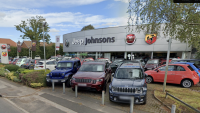 Ground-breaking technology, handsome looks and great engines gave the Cavalier the ammunition it needed to crack the booming family car sector. Little wonder buyers loved it…
Ground-breaking technology, handsome looks and great engines gave the Cavalier the ammunition it needed to crack the booming family car sector. Little wonder buyers loved it…
DESPITE being absent from new car price lists for nearly 14 years, the Cavalier name remains one held in high regard by Vauxhall nuts.
Why? Because it helped bring the company right into the modern age. The 1975 original was very much the right car, right size, right spec – and Opel engineering helped banish memories of ropey older Vauxhalls.
But the real impact came with the Mark II, launched in summer 1981. It was this model that made Vauxhall the giant it is today. No exaggeration. Prior to it, sales were strong, but not really Ford-level. The instant effect of the ‘J-car’ Cavalier took the Griffin straight into the big league, a position it’s never let go of.
Overnight, it added 70,000 annual sales to Vauxhall’s books. Dealers were delirious, particularly as all this new custom was for a perfectly-pitched and marketed car that was now seen as a proper big-league player.
It was such a hit because it was totally bang on the money. Whereas Ford was adopting a policy of radical styling coupled with dated rear-drive underpinnings for the Sierra, Vauxhall was winning fleet driver’s hearts. The smartly-styled Cavalier was classy, distinguished – and engineered with the very latest front-drive gear.
It also came in a huge variety of bodystyles: hatchback, a later estate and, crucially, a four-door saloon. That was what people in this sector wanted above all, as Ford later acknowledged with the Sierra Sapphire. By offering all variants (there were even odd two-door saloons and convertibles), Vauxhall ensured all bases were covered.
Trims were fleet-friendly: base, L, GL, GLS, CD plus an SR with two-tone paint and a racy look that was later enhanced by an 1,800cc fuel-injected engine. The SR i (that’s how it was written on the tailgate, much to customers’ confusion!) had the performance to make it a hit with private buyers – something that saw Vauxhall later take it ever-further upmarket with a 2.0-litre SRi 130.
Those were the days when cars were light, so you could get away with 1,300cc engines. Most popular were 1,600cc versions though, with 1982’s 1.8 injection fulfilling company driver’s dreams, and the 1,600cc diesel of the same year causing them nightmares. To be fair, it was nowhere near as bad as Ford’s horrendous 2.3-litre diesel Sierra, but it nevertheless was a second-rate choice compared to the company’s excellent, economical petrols.
The Cavalier soon gained a reputation for reliability. Good job, given the high miles most were being subjected to. Thank German Opel engineering for this, something that really helped enhance the car’s quickly growing reputation. Dealers soon found demand outstripped supply of the Luton plant: between 1981 and 1988, more than 800,000 found homes in the UK.
 The company neatly enhanced the Cavalier in ’87, with a successful facelift giving it more substance and more envious glances from Sierra drivers.
The company neatly enhanced the Cavalier in ’87, with a successful facelift giving it more substance and more envious glances from Sierra drivers.
Vauxhall boasted of a four-speaker digital cassette player, green-tinted glass and a height-adjustable steering column. L models got a five-speed ‘box, GLs got central locking, it was electric windows for the GLSi, while the CD won power steering.
All heady stuff back then, rather like the cracking new 115bhp 2.0-litre engine. Designed to be lead-free, of course. Remember the fuss over the green pump? It was even one of the first cars to have self-diagnostic ability.
As for its arch-rival, supposedly ‘too radical’ for 1982, which looks the more dated car today – Ford or Vauxhall? Griffin literature also pointed to shorter servicing times, hydraulic tappets, more powerful engines, bigger boots, better fuel economy and top scores for reliability. Not to mention a £281 price advantage for the 1.6 L, over the same-spec Sierra. A healthy amount even today.
The Cavalier was a classic in MkII form, which paved the way for Vauxhall to start dominating. Today, with the Insignia, it’s a sales battle with Ford – and it got there because of this car.
By RICHARD AUCOCK
Insignia wins Car of the Year 2009
































